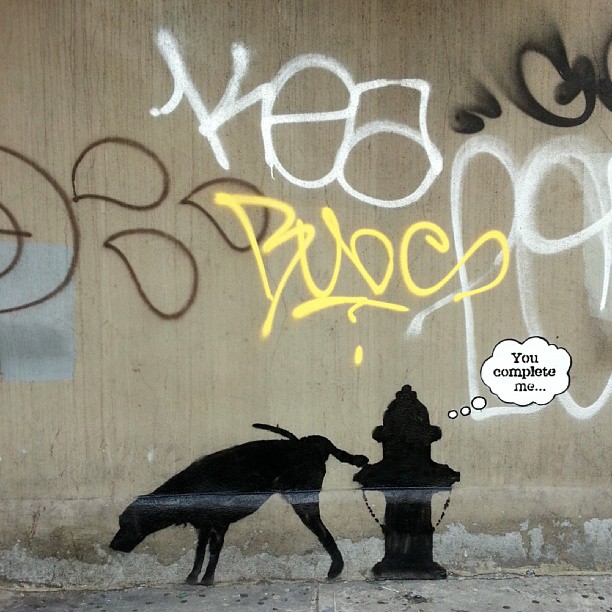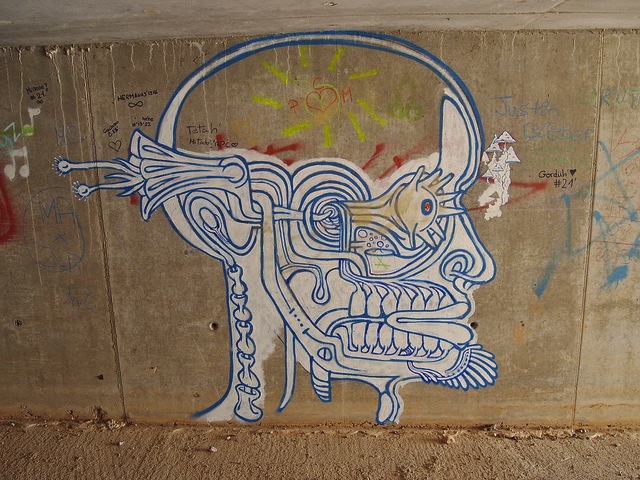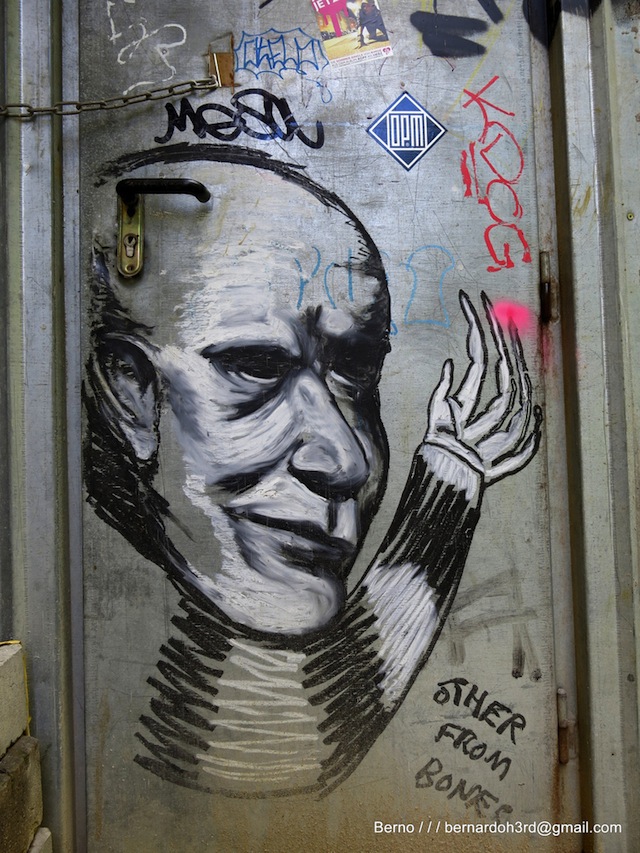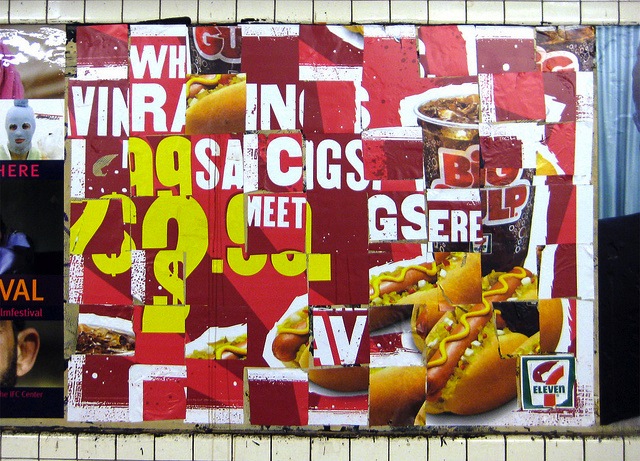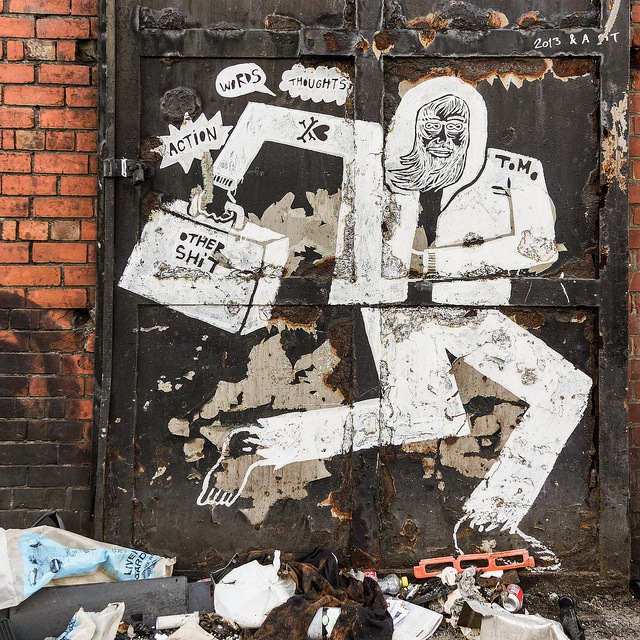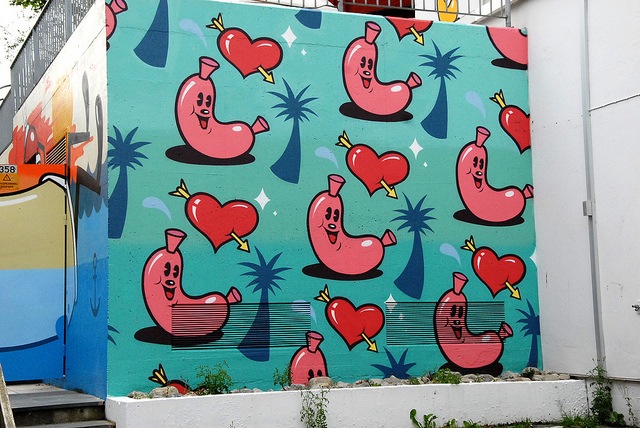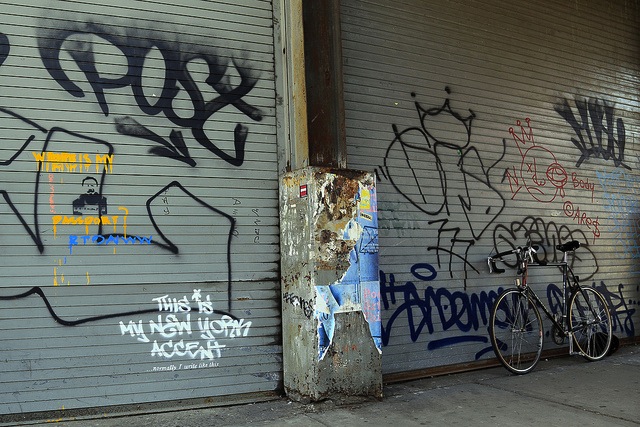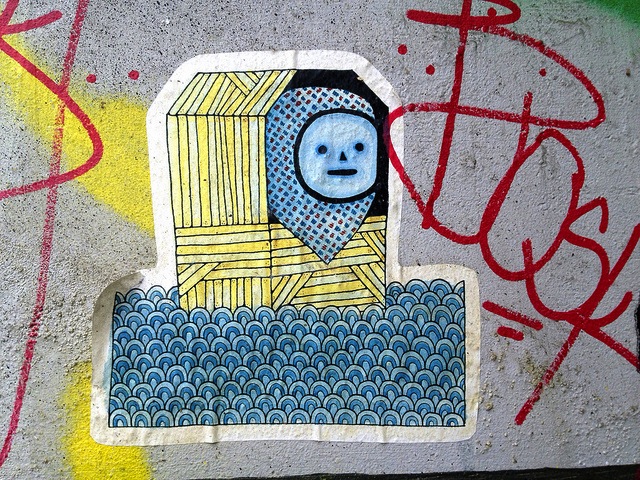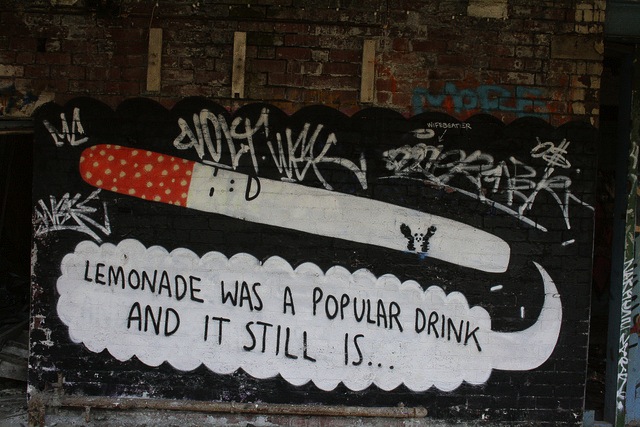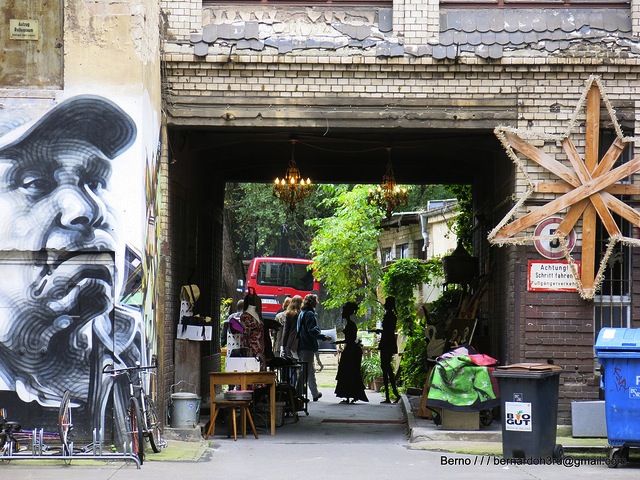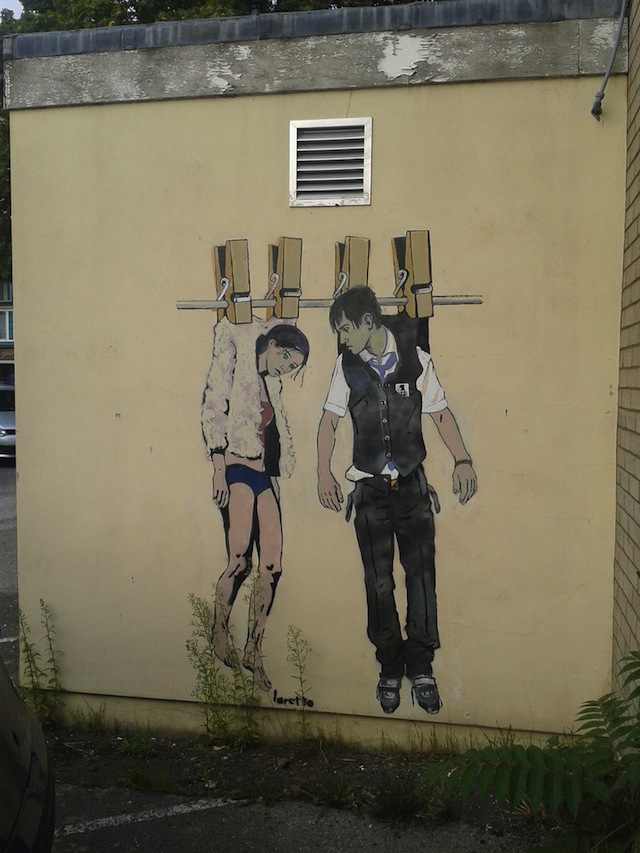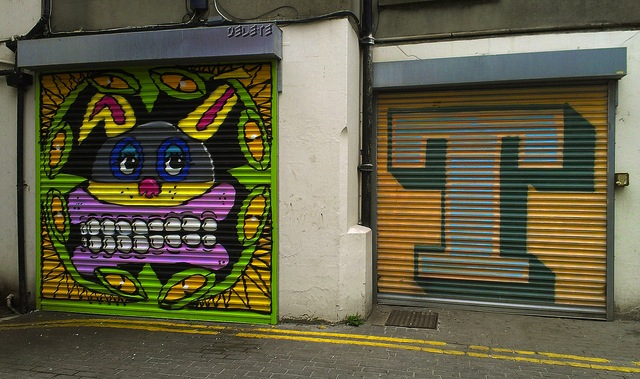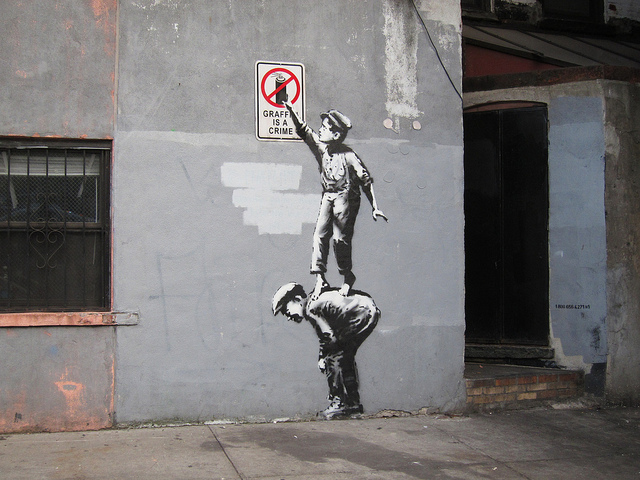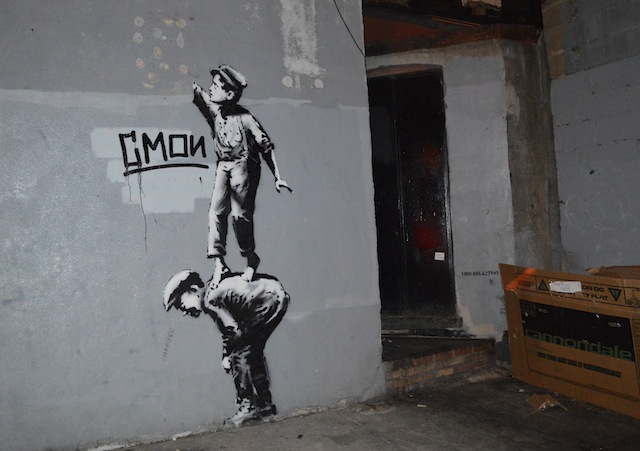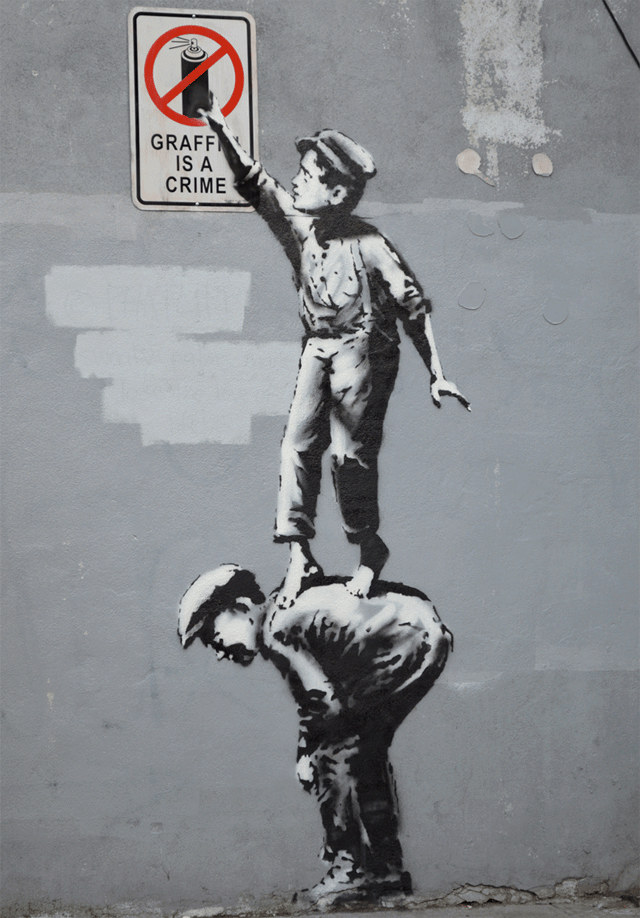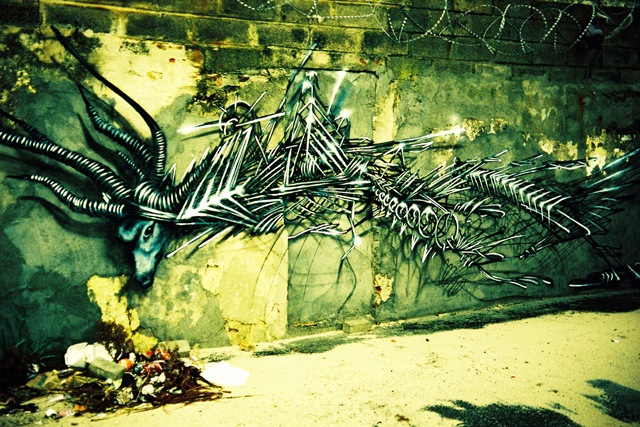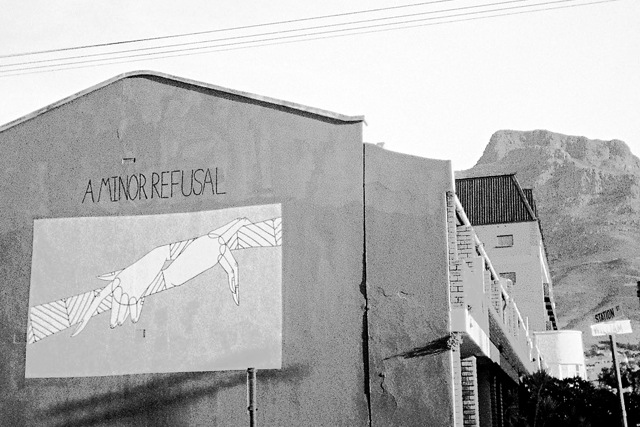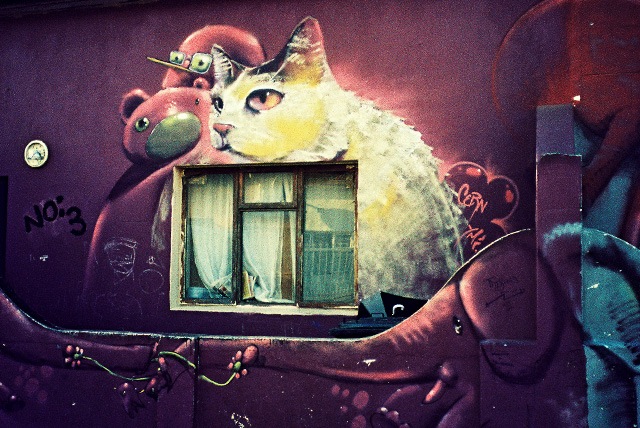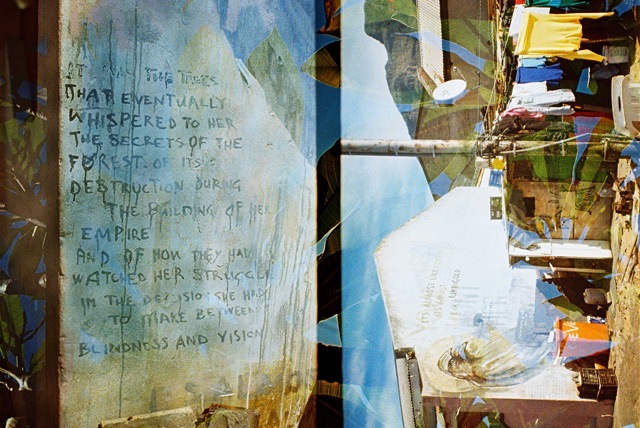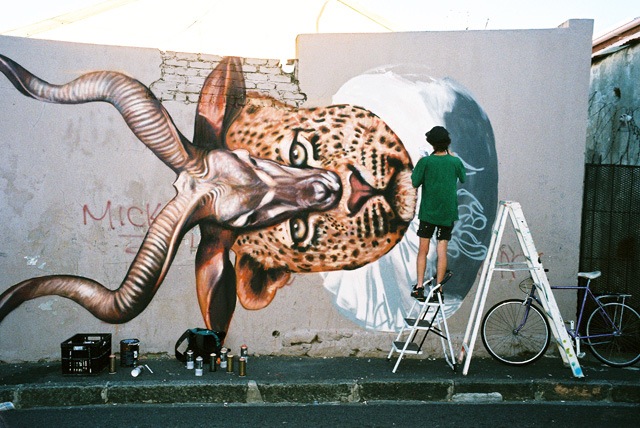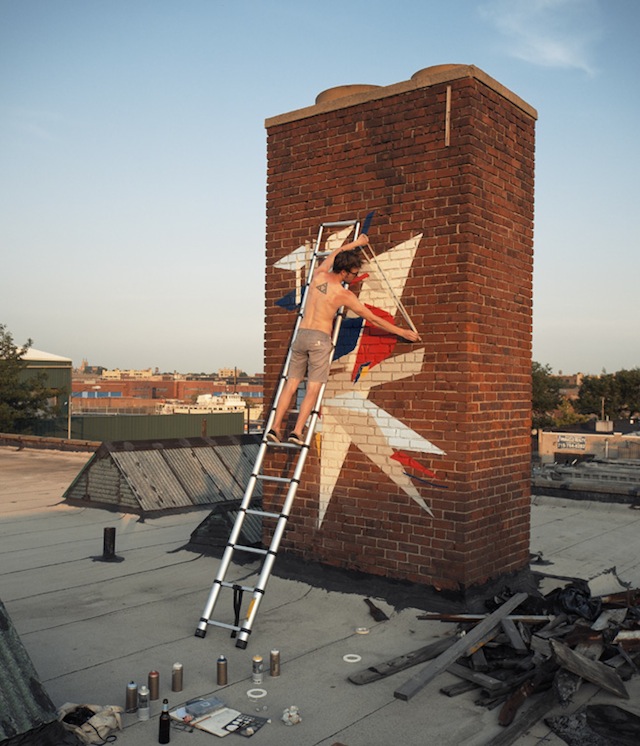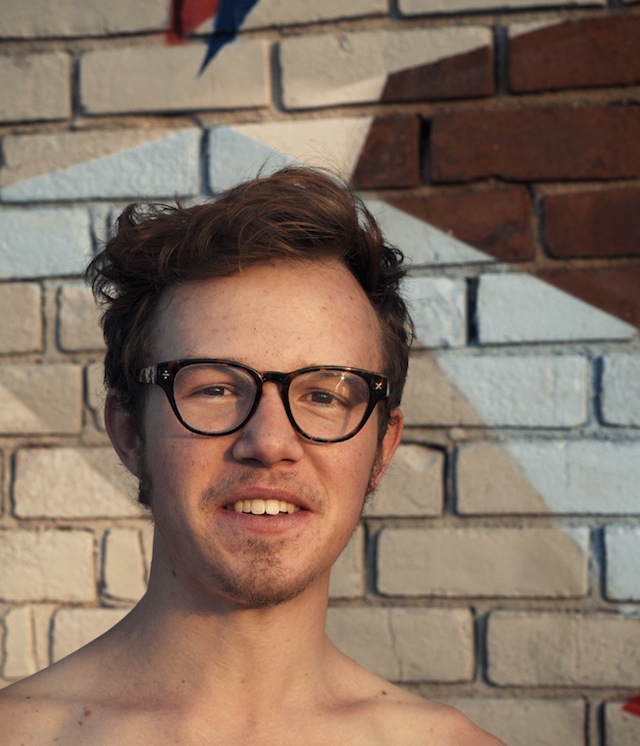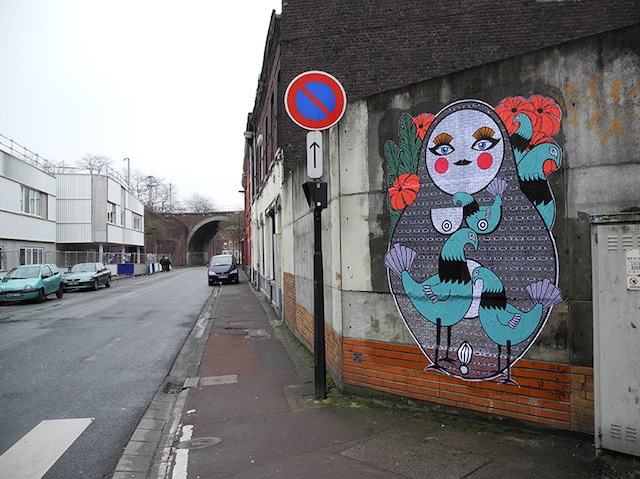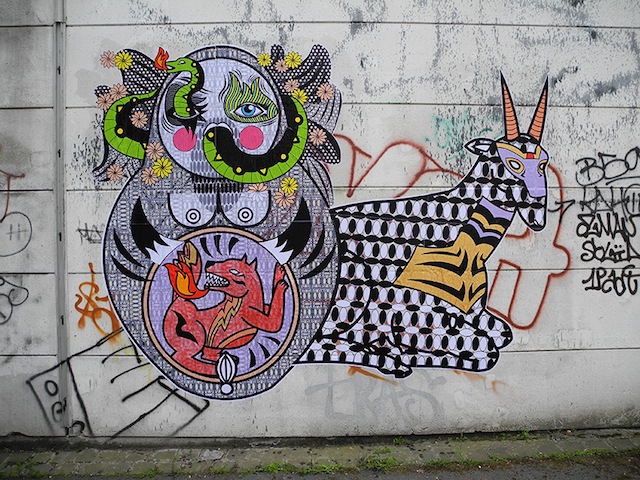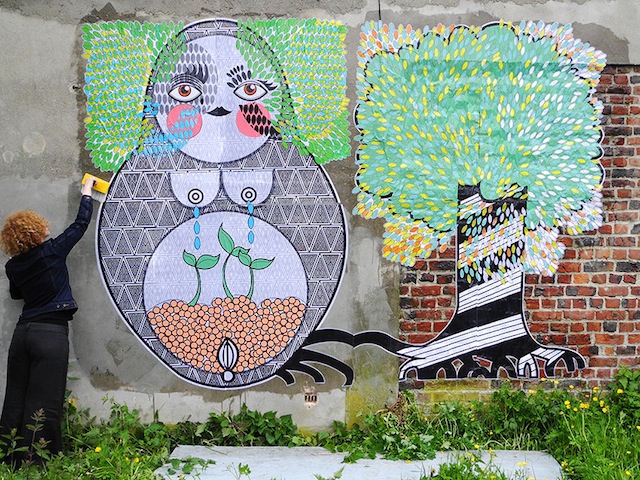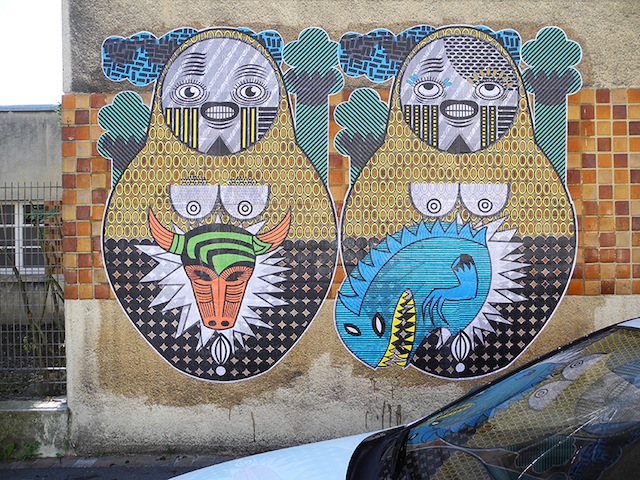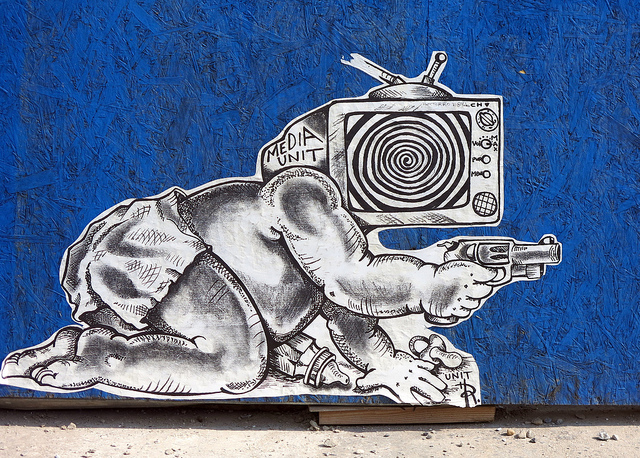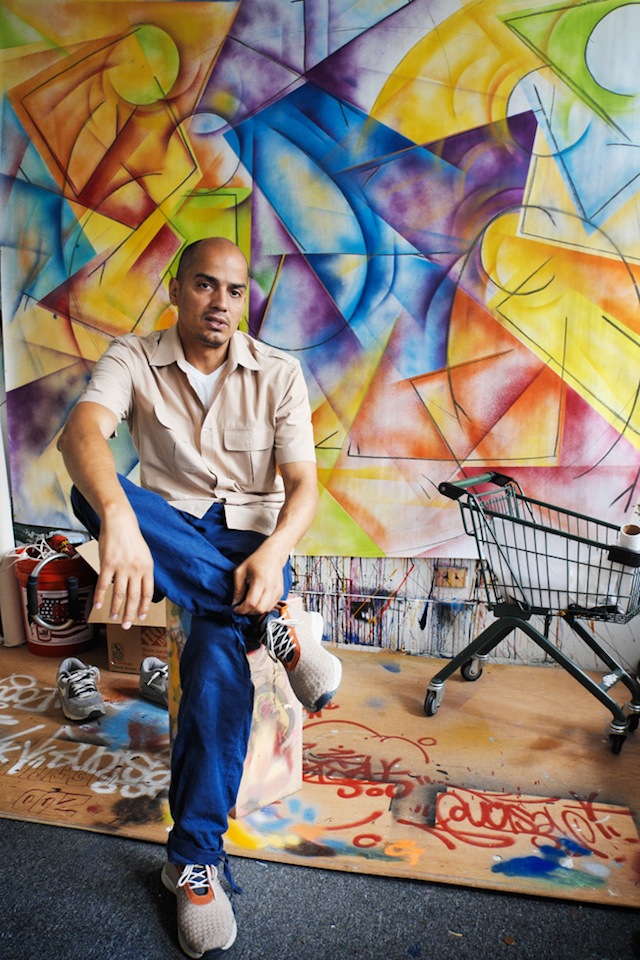
Carlos Mare aka Mare139 is one of hip hop’s living legends, and one of the pioneers when it comes to adapting what he learned in graffiti to settings other than walls and subway cars. Indoors, he is probably best-known for his sculptures, but of Mare’s recent work involves painting Bboys in action. This past spring, Tim Hans met Mare at his studio for the latest in our continuing series of photo-portraits of artists by Tim. I asked Mare a few questions over email.
RJ: Do you see yourself as bridging a divide between hip hop and other art movements with your artwork, or do you see art movements all as one thing?
Carlos Mare: I believe, though unintentional my works and words act as a bridge between histories and culture. Art movements are isolated events that are time and location specific, ultimately the ideas and aesthetics of that culture disseminate. Hip Hop was a great catalyst for global impact, it used to be very provincial in NYC during its hey day but once it breached local geography it was adopted and readapted by the world. This forced the hand of us pioneers to rethink it, I just happened to think of it in Modernist terms after I saw the 1980 Picasso retrospective at MoMa.
RJ: What have you done in your role as a cultural ambassador for the USA?
Carlos Mare: My role is not unlike any other traveling artist of the culture, we have been doing ambassadorships since day one. My role in part is supported by the State Dept., which does so for many American artists. I just happen to be an ‘Urban’ voice of the generation. Being able to have these opportunities allows me to speak in rooms with high level officials, artists and art advocates about the benefits and challenges of today’s urban artists. One of the most important things about traveling and speaking is that you get to educate others about the past and present contributions of the culture. This discourse is crucial and often overlooked in the relationship between governments and artists which is at best a side eyed acknowledgement.
Promoting American urban culture is much easier abroad then it is at home just so you know, in the US we have a tendency to marginalize the people of color who innovate culture until it is adapted by the mainstream. On the other hand the world youth took us on as their own and flipped the script by recognizing us as an artistic movement they too could embrace. Once it went pandemic it became hard to deny so it had to be in the best interests of Governments, Institutions and artists to bridge the gap in order to create more opportunities for personal and community change.
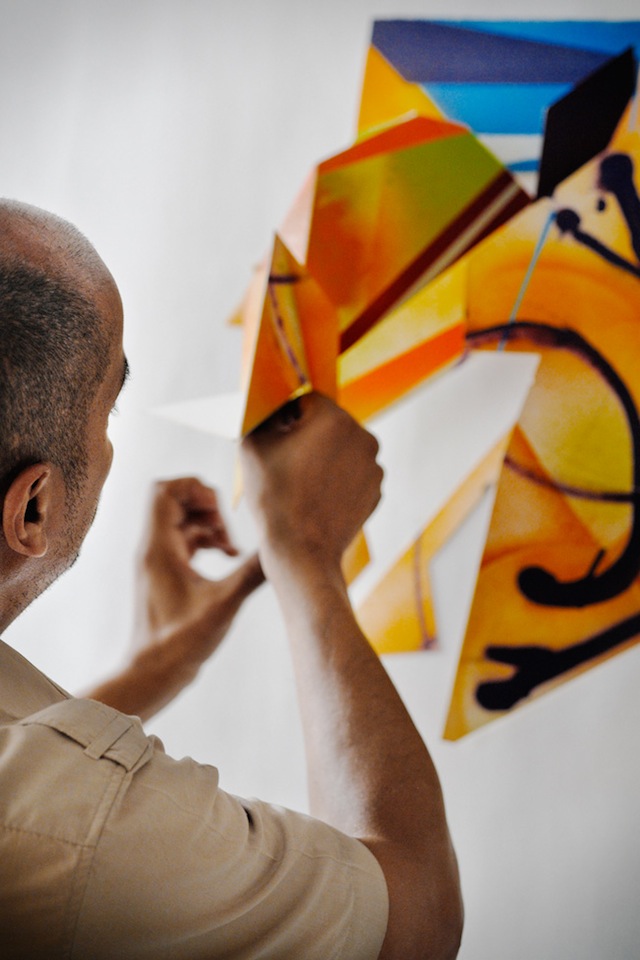
RJ: What do arrows mean to you?
Carlos Mare: Not much anymore actually. When I was more into Style Writing it had different meanings such as the direction in which the the construct of the letter would flow or to camouflage my name, perhaps use it as a weapon as my good friend Rammellzee used to imply. I learned that the greatest of Style Writers could do without it and can create sophisticated graffiti without it. At the end of the day it’s just another graphic element in the graphic design of graffiti.
RJ: Your Bboy pieces seem to capture so much energy and movement even while they are based on stick figures. Even moreso than many photographs. How do you go about capturing that movement in a static 2-dimensional image?
Carlos Mare: The Bboy works are not based on stick figures at all but rather geometry and movement. The line work implies the skeletal framework of the body and to a degree yes the stick figure is an easy analogy but it’s been so refined and so thought out that these shapes even in their simplest forms capture a reduced impression of the body, a familiarity that both Bboys and writers can identify with. It’s coded language, it’s rhythm, wild style and modernism all in one. One of the best interpretations came from my show in Berlin at Skalitzers Gallery when Robert Smith observed:
“Carlos Mare’s Bboy drawings and paintings, so refined and visually direct, become coded representations of the dancer’s repertoire of movements and poses. In much the same way that staffed symbols are used to represent the written form of musical notation, so too the simple, gestural icons come to express a visual codification, a defined scale of available movements.”
I had never considered an analogy like this even though it was already baked into the work, this observation was spot on and opened up a whole other dimension into my thought process. These works are in large part about physical intentions, what is implied by gesture and movement, so much of the genius of the dance is nuanced and can be found in the in between spaces of the action, a dancer begins at A and goes through his whole vocabulary to get to Z. What I am interested in is what happens in between and how to capture that. It’s a Futurist concept with a dope backbeat.
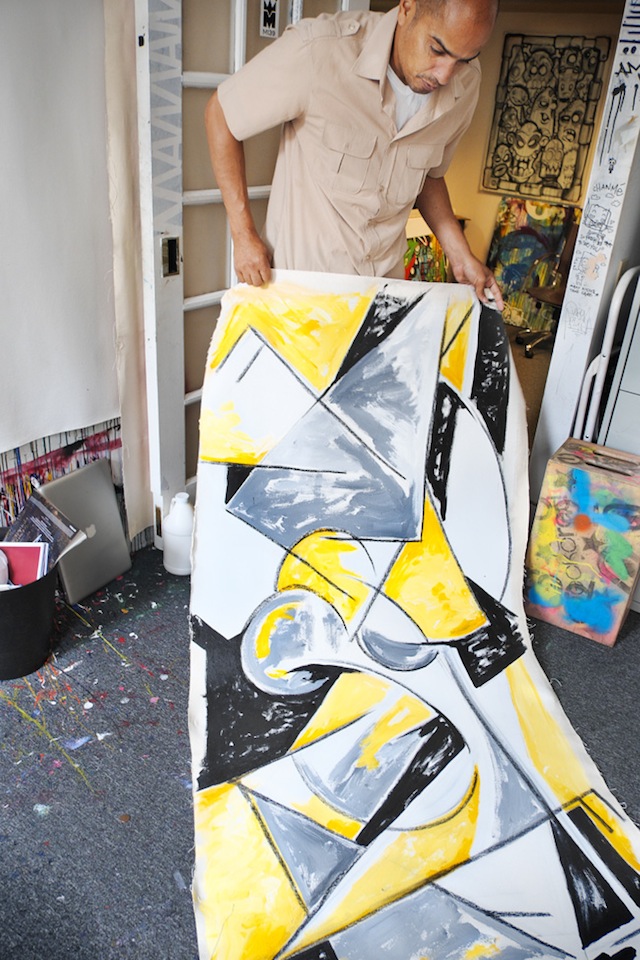
RJ: What’s next for you?
Carlos Mare: I am always stretching the boundaries in my works, I’m challenged by my own works and see my work changing radically in the coming year. I will continue painting the Bboy works which are more and more amazing and will turn these ideas into sculpture as well. That series will likely come to an end but not before I do a series with Ken Swift, this will be the pinnacle of this exploration I think, I could be wrong but I’ve been at it for many many years and feel I can bookend it with the legendary master as my subject.
As for sculpture, I haven’t begun to scratch the surface. I have lots of new works coming and older works that need closure before I move into the next phase of sculpting. It’s unfortunate that sculpture is not in the urban contemporary art conversation right now, painting is getting way too much light since it is easier to do and live with. I hope to change this with new public works that are larger, smarter and more ambitious.
Currently I am consulting with the Lemelson Center/Smithsonian Institute with an upcoming exhibition on Hip Hop culture which will highlight the Turntable as an American Innovation. Beyond that I can’t speak about what I have planned as it is probably the most ambitious and important work of my career.
“Don’t be an outsider looking in, be the Outsider they look into.” – Carlos Mare
Photos by Tim Hans
